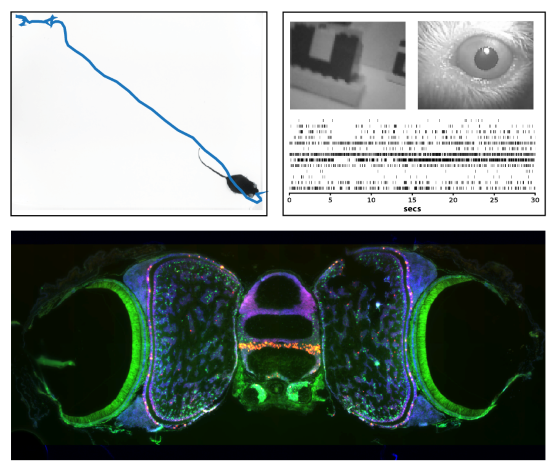Abstract:
Natural visual processing entails a complex interplay between sensory input, behavioural context, and on-going brain dynamics. Our lab seeks to understand how these processes give rise to goal-directed visual behaviours, using the mouse as a model system. As a complement to studying visual processing in trained tasks, we are now exploring the neural circuits mediating ethologically relevant behaviours that laboratory mice perform. In particular, our studies of prey capture have provided insight into behavioural strategies and neural circuits for detection of salient stimuli within a complex and dynamic sensory environment. We are also implementing novel experimental approaches to investigate neural coding of the visual scene as animals freely move through their environment and engage in natural behaviours. Finally, I will present a new research direction studying the completely different, yet largely unexplored, visual system of the octopus.

Biography:
Cristopher Niell received his B.S. in physics at Stanford University, doing research in single-molecule biophysics with Dr. Steven Chu. He then remained at Stanford to obtain his PhD with Dr Stephen Smith, studying the development and function of the zebrafish visual system. He then moved to UCSF to perform post-doctoral study with Dr. Michael Stryker, where he initiated studies of visual processing and behavioural state in the mouse cortex. He established his lab at University of Oregon in 2011, where he is now an Associate Professor in the Department of Biology and Institute of Neuroscience. His lab uses a combination of neural recording and imaging methods, operant and ethological behaviors, and computational analysis to study the neural circuits that underlie visually guided behaviour and perception.
Click here to register via eventbrite.
